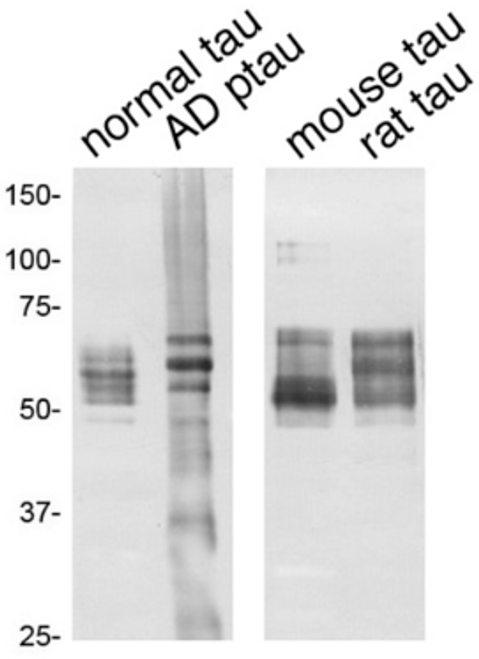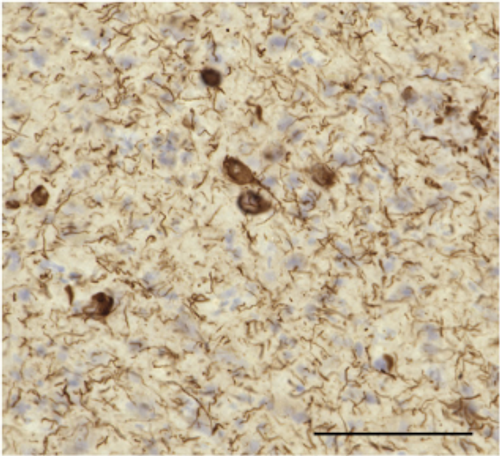Background
What is 4R-tau?
In many neurodegenerative diseases, including Alzheimer’s disease (AD), abnormal lesions characterized by the fibrillation of tau—a type of microtubule-associated protein—are observed. The distribution and extent of these tau aggregates strongly correlate with clinical symptoms and disease progression.
Six isoforms of tau are expressed in the human brain, and they are classified into 3R-tau and 4R-tau depending on the number of repeat sequences they contain. The specific tau isoforms that undergo fibrillation vary by disease type. For example, in AD, all six tau isoforms are involved; in Pick’s disease, only 3R-tau forms fibrils; and in corticobasal degeneration (CBD) and progressive supranuclear palsy (PSP), 4R-tau is the predominant fibrillating species.
Currently, antibodies that specifically recognize 3R-tau or 4R-tau are commercially available and used for biochemical and histological analyses. However, recent studies have shown that deamidation of Asn279 in 4R-tau can affect antibody reactivity. This product was developed as an antibody that specifically recognizes 4R-tau isoforms regardless of Asn279 deamidation, and has been reported to be useful for both biochemical and histopathological analyses.
Antibodies for Neurodegenerative Disease Markers
Novel antibodies for detecting abnormal lesions in dementia and neurological disorders
(Target diseases include Alzheimer’s disease, Parkinson’s disease, ALS, tauopathies, and more)
Neurodegenerative diseases such as Alzheimer’s disease and Parkinson’s disease are rapidly increasing in prevalence in our aging society and have become a serious social issue. In recent years, the discovery of novel causative genes for amyotrophic lateral sclerosis (ALS) has further heightened research interest in elucidating disease mechanisms.
In these diseases, it is suggested that the aggregation and accumulation of specific proteins cause neurotoxicity and lead to pathological changes. However, the mechanisms underlying disease onset and progression remain unclear. Therefore, there is a strong demand for useful biomarkers that can aid in neuropathological diagnosis, the development of experimental models, drug discovery, and therapeutic research.
Under the Cosmo Bio antibody brand “CAC: CosmoBio Antibody Collection,” we have previously offered antibodies for detecting abnormally phosphorylated TDP-43, a causative protein in ALS. We are now pleased to introduce new antibodies against translation products of the C9orf72 repeat expansion, which has been implicated in ALS, as well as a newly published 4R-tau–specific antibody.
Contributor:
Dr. Shigeto Hasegawa
Director, Department of Brain and Neurosciences, Tokyo Metropolitan Institute of Medical Science
Antibody Lineup for Neurodegenerative Disease Markers
-
4R-tau Antibody
-
C9orf72 Antibody
-
Phosphorylated TDP-43 Antibody
-
α-Synuclein Antibody
| Product Specifications | |
| Application | IHC, WB |
| Reactivity | Human, Mouse, Rat |
| Clonality | Polyclonal |
| Host | Rabbit |
| Documents & Links for Anti Tau-C pAb | |
| Datasheet | Anti Tau-C pAb Datasheet |
| Documents & Links for Anti Tau-C pAb | |
| Datasheet | Anti Tau-C pAb Datasheet |



